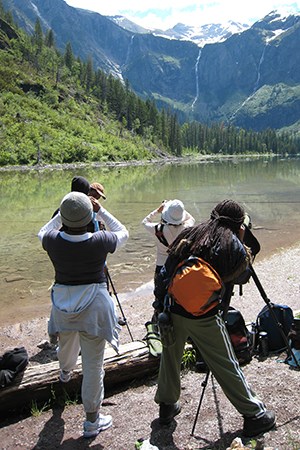
NPS Glacier's scenery dramatically illustrates an exceptionally long geologic history and the many geological processes associated with mountain building and glaciation. The geologic features of Glacier National Park combine natural beauty, examples of mountain-building, and the effects of glaciation, revealing many chapters in the history of the Earth; and providing a snapshot of the tremendous forces of geologic uplift, mountain building, and overthrust events that provided the unique foundation for Glacier's natural beauty. Grades: 5–9
National and State Science Standards: ObjectivesStudents will be able to:
Field Trip LogisticsTeachers wishing to have their students participate in the earth sciences field trip should plan to arrive in the park by 9:30 am and stay until 2 pm. Allowing adequate time (5 hours) inside the park will result in a less-rushed, more enjoyable experience. Everyone in the group must be prepared to be outside all day and ready to hike a trail that gains 500 ft of elevation over 2 miles (one way, for a total of 4 miles round-trip). Example for a bus of 60 students, divided into 2 groups of 30 students each: Reserve Your TripVisit the Scheduling & Guidelines page to find the reservation form as well as tips for a successful day in the park. If you have questions, email or call the Apgar Education Office at 406-888-7899. Preparing for Your TripStudents that spend time preparing for their visit get more out of a field trip to the park. Activities post-visit also help to reinforce information learned during the trip. Once registered for a field trip, you will recieve a curriculum guide, containing the following lessons:
Suggested activities and supplementary materials: |
Last updated: April 29, 2025
